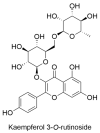Phytochemistry and Biological Studies of Endemic Hawaiian Plants
- PMID: 38003513
- PMCID: PMC10670932
- DOI: 10.3390/ijms242216323
Phytochemistry and Biological Studies of Endemic Hawaiian Plants
Abstract
The Hawaiian Islands are renowned for their exceptional biodiversity and are host to a plethora of endemic plant species, which have been utilized in traditional Hawaiian medicine. This scientific review provides an in-depth analysis of the phytochemistry and biological studies of selected endemic Hawaiian plants, highlighting their medicinal properties and therapeutic potential. A literature search was conducted, utilizing major academic databases such as SciFinder, Scopus, Web of Science, PubMed, Google Scholar, Science Direct, and the Scientific Information Database. The primary objective of this search was to identify relevant scholarly articles pertaining to the topic of the review, which focused on the phytochemistry and biological studies of endemic Hawaiian plants. Utilizing these databases, a comprehensive range of literature was obtained, facilitating a comprehensive examination of the subject matter. This review emphasizes the rich phytochemical diversity and biological activities found in Endemic Hawaiian plants, showcasing their potential as sources of novel therapeutic agents. Given the unique biodiversity of Hawaii and the cultural significance of these plants, continued scientific exploration, conservation, and sustainable utilization of these valuable resources is necessary to unlock the full potential of these plant species in drug discovery and natural product-based therapeutics.
Keywords: Hawaiian plants; biological activities; biological studies; chemical constituents; endemic Hawaiian plant; phytochemistry.
Conflict of interest statement
Authors Shi Xuan Wong, Aya Wada, and Yutaka Kuroki were employed by the company Delightex Pte. Ltd., Singapore. The remaining authors declare that the research was conducted in the absence of any commercial or financial relationships that could be construed as a potential conflict of interest.
Figures





















References
-
- Nagata K.M. Hawaiian medicinal plants. Econ. Bot. 1971;25:245–254. doi: 10.1007/BF02860761. - DOI
-
- Vernon A.L., Ranker T.A. Current status of the ferns and lycophytes of the Hawaiian Islands. Am. Fern J. 2013;103:59–111. doi: 10.1640/0002-8444-103.2.59. - DOI
-
- Stone B.C. A review of the endemic genera of Hawaiian plants. Bot. Rev. 1967;33:216–259. doi: 10.1007/BF02858638. - DOI
Publication types
MeSH terms
Substances
Grants and funding
LinkOut - more resources
Full Text Sources

